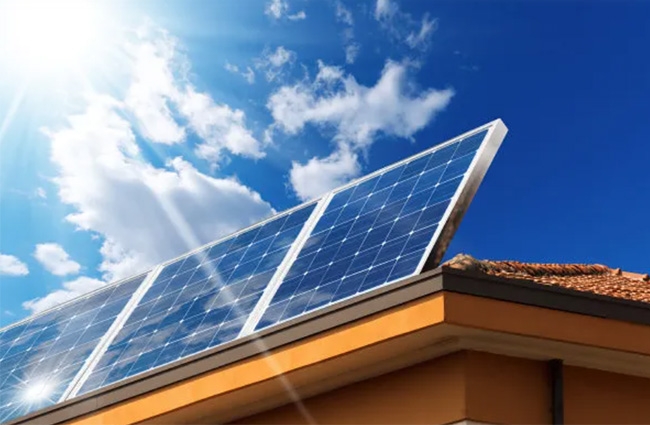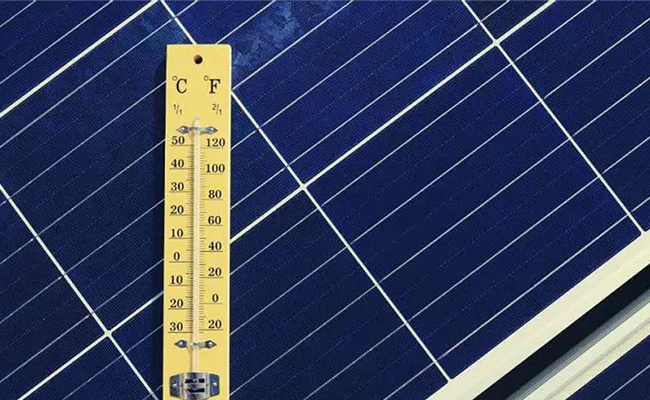Solar energy is a powerful and renewable resource, particularly advantageous in regions with abundant sunlight. Hot climates, often characterized by intense solar radiation, provide an ideal environment for harnessing solar energy. However, the high temperatures associated with these regions can also pose challenges to the efficiency and longevity of solar panels. This article offers comprehensive tips to maximize the benefits and performance of solar panels in hot climates.

1. Choose high-efficiency solar panels.
Choosing the appropriate type of solar plate is crucial for maximizing efficiency, especially in hot climates. Efficient solar panels, such as those made of single crystal or double-sided cells, are designed to maintain higher performance levels even at high temperatures. These panels typically have better temperature coefficients, which means that compared to standard panels, their efficiency loss is smaller when the temperature rises.
2. Optimize panel orientation and tilt.
The correct direction and tilt angle have a significant impact on the efficiency of solar panels. In a hot climate with high sunlight intensity, adjusting the direction and tilt angle of the solar plate will help reduce heat accumulation and improve the cooling effect. Consider directing the pv solar panels slightly to the east or west, rather than directly to the south, to minimize the exposure to strong noon sunlight. In addition, adjusting the tilt angle to provide better airflow below the panel can help with more effective heat dissipation.
3. Ensure sufficient ventilation.
Proper ventilation is crucial for preventing heat accumulation and maintaining the optimal operating temperature of sun panels. When installing solar panels, please ensure that there is sufficient space between the panel and the installation surface to ensure air circulation. Ground mounted systems or inclined installations can improve airflow under panels, promote heat dissipation, and reduce heat loss.
4. Shading management technology.
Sunshade significantly affects the efficiency of photovoltaic panels, especially in hot climates with already high solar intensity. By carefully selecting the installation location of solar panels, reduce shading and stay away from obstacles such as trees, buildings, or nearby buildings. Trim any overhanging branches or leaves that may cast shadows on the panel, and consider installing shading structures or sun tracking systems to optimize sunlight exposure throughout the day.
5. Using heat reflective coatings.
Applying a heat reflective coating or material on the back of a solar photovoltaic panel can help reduce heat absorption and improve overall efficiency. The design purpose of these coatings is to reflect a portion of sunlight away from the panel, thereby reducing operating temperature and improving performance, especially during peak sunlight periods. Thermal reflective coatings can be applied in panel manufacturing processes and can also serve as after-sales solutions.
6. Implement active cooling system.
Under extreme high temperature conditions, consider implementing an active cooling system to further reduce the temperature of pv panels and improve efficiency. Water based cooling systems, such as drip irrigation or spray systems, can effectively dissipate heat and maintain optimal operating temperatures. Similarly, using fans or ventilated air cooling systems can improve airflow and prevent heat accumulation, especially when installed on the ground or at an angle.
7. Regular maintenance and cleaning.
Regular maintenance and cleaning are crucial to ensure the optimal performance of solar pv panels, especially in hot climates where dust, debris, and pollutants may accumulate faster. Arrange routine inspections to check for any signs of damage or degradation, such as hotspots or discoloration, and regularly clean the panel with water and soft brushes to remove dirt and debris that may hinder sunlight absorption.
Why Too Much Heat is Bad for Solar PV Panels?
- Reduced efficiency. High temperatures can cause a phenomenon called temperature coefficient, which reduces the efficiency of solar photovoltaic panels. As the temperature increases, the resistance of the solar cell increases, resulting in a decrease in the power output of the panel. This decrease in efficiency means that solar panels generate less electricity under a certain amount of sunlight, ultimately reducing total energy production.
- Thermal degradation. Long term exposure to high temperatures can accelerate the degradation of materials inside solar pv panels, especially sealants and backplates. Thermal degradation can cause these materials to turn yellow, crack, or delaminate, thereby affecting the structural integrity and lifespan of the panels. Over time, thermal degradation can damage the performance and reliability of solar panels, leading to reduced energy output and potentially expensive maintenance or replacement.
- Accelerated aging. High temperatures can accelerate the aging process of solar panels, leading to faster degradation of components over time. Heat induced degradation can affect the performance, reliability, and lifespan of panels, leading to a decrease in energy production and an increase in long-term maintenance costs.
Signs of an Overheating Solar Panel:
The signs of pv solar panel overheating can manifest in various ways, indicating potential issues in performance, efficiency, and lifespan. The following are some common signals that need to be noted:

- Formation of hotspots. A hotspot is an area on the surface of a solar panel that is locally overheated, usually caused by shadows, mismatches in some cells, or other factors. These hotspots may appear in darker or discolored areas on the surface of the panel, and may lead to accelerated degradation of affected cells. If you find any irregularities or discoloration on the powerness solar panel, it is important to investigate and solve the root cause in a timely manner.
- Cracking or delamination. Long term exposure to high temperatures can cause the materials inside solar panels, such as sealants and backplates, to degrade and deteriorate over time. This degradation may manifest as cracking, bubbling, or delamination of panel components, damaging the structural integrity and lifespan of the panel. If you observe any signs of physical damage or degradation on the solar plate, it is crucial to promptly address them to prevent further degradation and potential malfunctions.
- Rising working temperature. Solar panels are designed to operate within a certain temperature range, typically between 25 to 35 degrees Celsius (77 to 95 degrees Fahrenheit). If the operating temperature of your pv panel exceeds this range, it may indicate overheating and potential performance issues.
- Reduced efficiency. Overheating increases the resistance of the battery, reduces its ability to convert sunlight into electricity, and thus has a negative impact on the efficiency of solar panels. Therefore, you may observe a decrease in the overall efficiency of solar systems, leading to a decrease in energy production and potential losses in power generation. Regular monitoring of the efficiency of solar panels can help identify any performance issues related to overheating and take appropriate measures to address these issues.
Solar panels are a viable and sustainable energy solution for hot climates, provided that appropriate measures are taken to address the challenges posed by high temperatures. By selecting the right type of panels, ensuring proper ventilation and cooling, optimizing the tilt and orientation, using high-quality materials, and investing in regular maintenance and monitoring, you can maximize the efficiency and lifespan of your solar energy system. Inverter Online Shop offers a variety of power solar panels, such as 30W solar panel, 100W solar panel, 500W solar panel and so on. With these tips in mind, you can harness the abundant sunlight in hot climates to generate clean, renewable energy, contributing to a more sustainable future while minimizing the impact of extreme temperatures on your solar panels.
